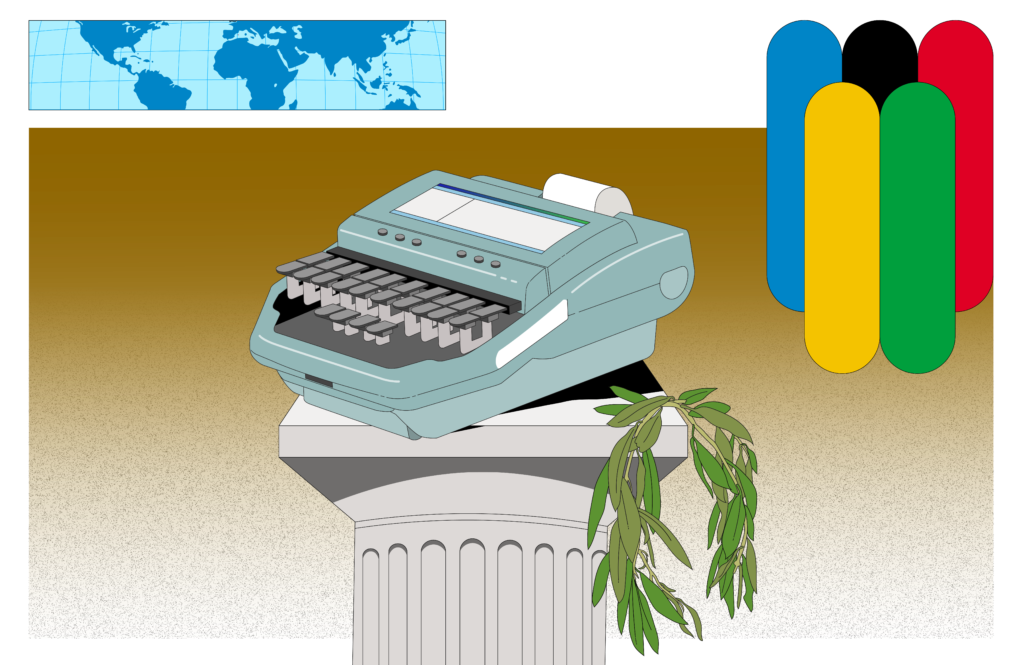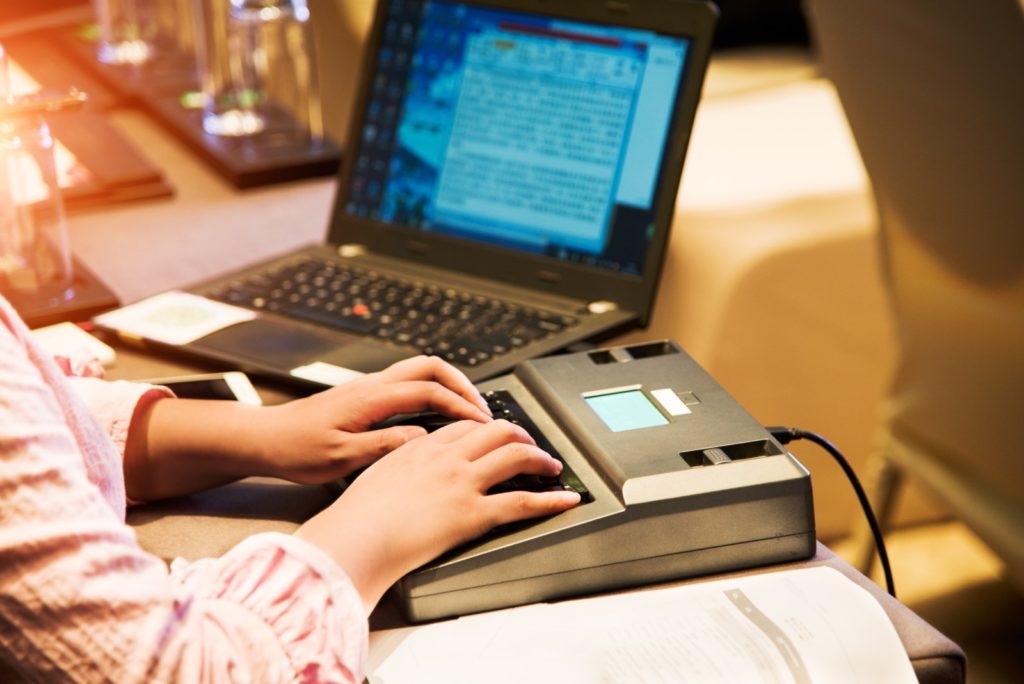
The Gold Medal Standards of Stenography
During the 2021 Olympics season, we thought a lot about the amazing work of Ai-Media’s stenographers.
Stenographers are the people often responsible for creating our top-level live captions for fast-paced sports events like the Olympics – complete with technical language, and names from all around the world.
For this article, we spoke to one of our star stenographers to explore how they work and how they keep up with the world’s best athletes.
But first – a brief explainer on stenography!
What is stenography?
At Ai-Media, we have a variety of different techniques and products used to create the live captions you can see at the bottom of your screen on live television or live streams.
Our technologies and expert team enable us to provide access to content, in real-time, across the globe.
Stenography is perhaps one of the oldest methods of captioning, which has adapted to new environments and new technologies over time.
A technique originally to record court cases word by word, stenography keeps up to speed with how quickly people speak through use of a specialized stenograph machine which captures the shorthand typing of specialized professionals known as stenographers.
Sharon Hoole, an Ai-Media staff member and a stenographer for 33 years, tells us more about this unique skill used for captioning.
How is stenography unique as a captioning method?
“Unlike respeaking, which uses voice recognition software [to listen to the captioners voice], stenographers use a keyboard,” says Sharon.
“We use a combination of keys to create words, syllables and phrases, just like you play chords on a piano or keyboard to create different sounds. Our stenograph outlines are translated via computer and converted into English text, which then feeds through software to send the captions out to air.”
This means that stenographers aren’t reliant on voice recognition software to correctly discerning their speech to create accurate captions.
“I guess you could say we are the masters of our art,” says Sharon.
But it comes with a risk! “If we hit one wrong key, the computer won’t be able to translate our steno into English, so you have to be very accurate.”
Every word, syllable or phrase in the English language has a different stenograph key stroke. There are almost endless combinations of keystrokes that stenographers use and have to get right each time.

What’s different about a stenograph keyboard?
If that’s not enough to convince you that our stenographers are Olympians, wait until you hear about how a stenograph machine is set up!
A stenograph machine has 22 keys plus an asterisk key. This is set out in two banks of keys separated by an asterisk key, and then four keys at the bottom, which are the vowel keys.
The eight keys on the left-hand side of the asterisk key are initial consonant sounds for each word, syllable or phrase, and are operated with the four fingers on the left hand. The ten keys on the right side of the asterisk key are the final consonant sounds for each word, syllable or phrase, which are operated with the four fingers on the right hand. The four vowel keys at the bottom of the keyboard are triggered by the thumbs.
“Each word, syllable or phrase is made up of an initial consonant sound, a vowel sound, and a final consonant sound,” says Sharon. Our left hand does the initial consonant sound, our thumbs put the vowel sounds in, and then our right hand does the final consonant sounds.”
Preparation is key
Much like Olympians preparing for a race, stenographers must also prepare for captioning sessions.
People’s names are prepared onto the computer’s dictionary, and a shorthand key stroke is created to trigger that name when required in a live session. With multiple nations competing in the Olympic Games across a variety of sporting disciplines, there is a lot of information to keep up-to-date with.
A keen ear is essential for deciphering commentators at the speed of which they talk.
“People are talking faster, it seems. It’s like running on a racetrack, and someone is behind you telling you to go faster,” says Sharon. “So you just hang on and sometimes it can be for long periods of time that you have to white-knuckle through it. It’s fine to run a 100m sprint flat out, but try running a marathon flat out!”
Striving for gold
The Ai-Media team has experience delivering Olympic events, having captioned the 2016 Summer Olympics, 2016 Paralympics, 2018 Winter Olympics and 2018 Commonwealth Games.
We are aiming for gold!
“Most stenographers aim for perfection,” says Sharon.
“If I can use the music analogy, it’s like playing a piece on the piano to perfection. You get a lot of satisfaction out of doing something really well. I strive for it, and when I get close, it’s really satisfying.”
If you’d like to engage our top-quality captioning, transcription and translation services, just get in touch!










